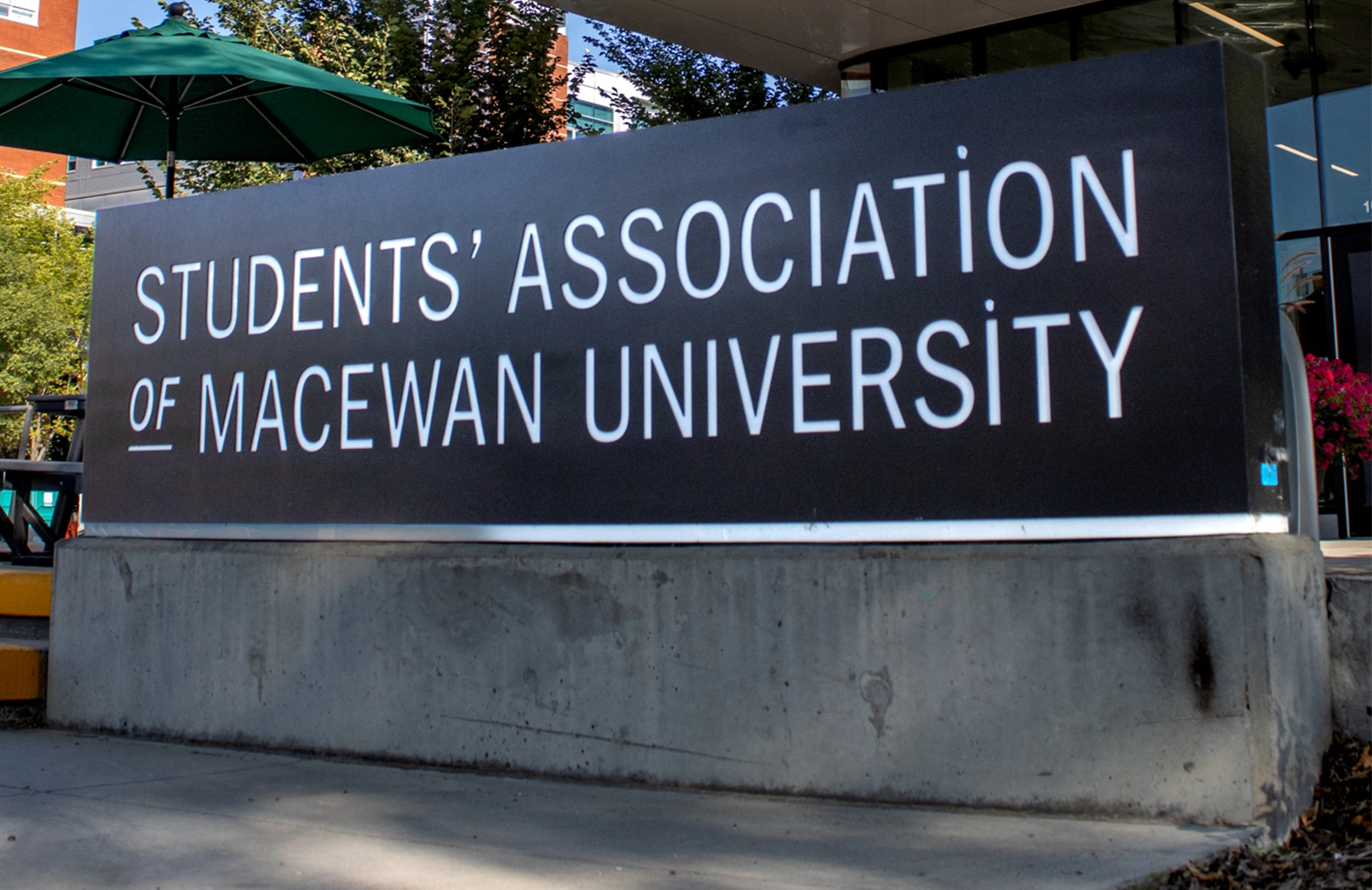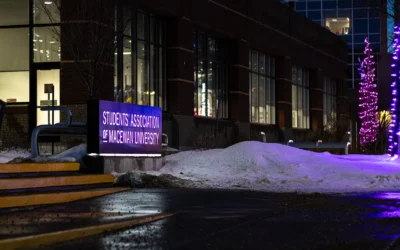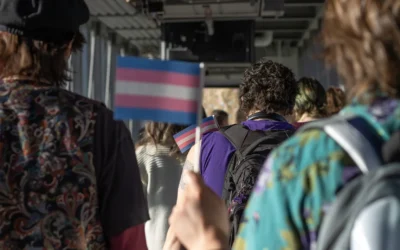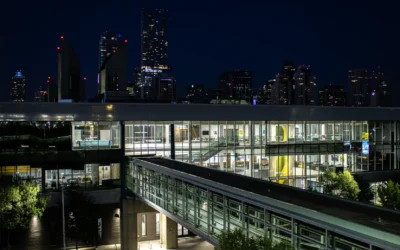Members of the group spoke about housing and transit safety issues.
Raynesh Ram
Photo by Amanda Erickson
The Edmonton Student Alliance (ESA), a collective that represents over 100,000 post-secondary students in Edmonton — including MacEwan students — has been in collaboration with the City of Edmonton to address student affordability and transit safety issues at a municipal level.
The ESA partnered with the city to share a cross-campus survey to learn about transit and housing concerns from a post-secondary student perspective.
“We found articulated concerns from students, specifically when it comes to safety on transit, that’s a driving concern, especially for marginalized students who don’t necessarily feel safe or comfortable within transit, on top of concerns related to reliability, comfort, cleanliness and accessibility,” says ESA chair Nathan Thiessen.
Thiessen notes that through the ESA’s advocacy efforts, the city is looking to implement cell services in transit stations, so that students can call emergency services if safety concerns arise.
The survey also revealed that students are looking for housing that is close to bus stops and LRT stations.
“And, we found articulated concerns from students, specifically when it comes to safety on transit, that’s a driving concern, especially for marginalized students who don’t necessarily feel safe or comfortable within transit, on top of concerns related to reliability, comfort, cleanliness and accessibility.”
— Nathan Thiessen, ESA chair
Thiessen also pointed to the zoning bylaw changes as another win for student housing affordability. The zoning bylaw allows more multi-unit housing to be built in neighbourhoods across the city, thus increasing housing supply. During the zoning bylaw committee, Thiessen attended to voice his support.
“Advocating to ensure that we are seeing actionable and long term and sustainable progress when it comes to housing, when it comes to ensuring those zoning bylaws remain as well as they are expanded on is important because not only has it impacted students here and now, but it’s also future generations as well, and I think that’s in turn because we can talk about the cost of living, we can talk about rent, but it means making and advocating for good policy,” he says.
However, some critics argue that the current rate of infill development may destabilize mature neighbourhoods that may not have the infrastructure to support development.
Wilfrid Youbi Fansi, MacEwan’s representative for the ESA and vice-chair, says the organization has at least one mandated meeting a year with the mayor and city council. In these meetings, the ESA can voice its advocacy points directly to changemakers.
“We need access to a safe transit system that we can all rely on and use—that lets us get to campus and get to and from campus.”
—Wilfrid Youbi Fansi, ESA vice-chair and SAMU vice-president (external)
He also notes that the ESA has informal meetings throughout the year with various city managers and head officials of various municipal sectors. According to him, city officials sometimes approach the ESA with questions and issues that they believe will affect students.
“And because at the end of the day, we all want to help each other,” says Youbi Fansi. “It’s just finding out how we can help and what the issues are. Because a lot of time it’s just gathering that research and that information, then you’re able to put it to vote and make that change happen.”
“We all need access to safe and affordable housing,” says Youbi Fansi. “We need access to a safe transit system that we can all rely on and use — that lets us get to campus and get to and from campus. And we all need these various things that the city has the ability to control and help us advocate for our students to get to that end.”





0 Comments